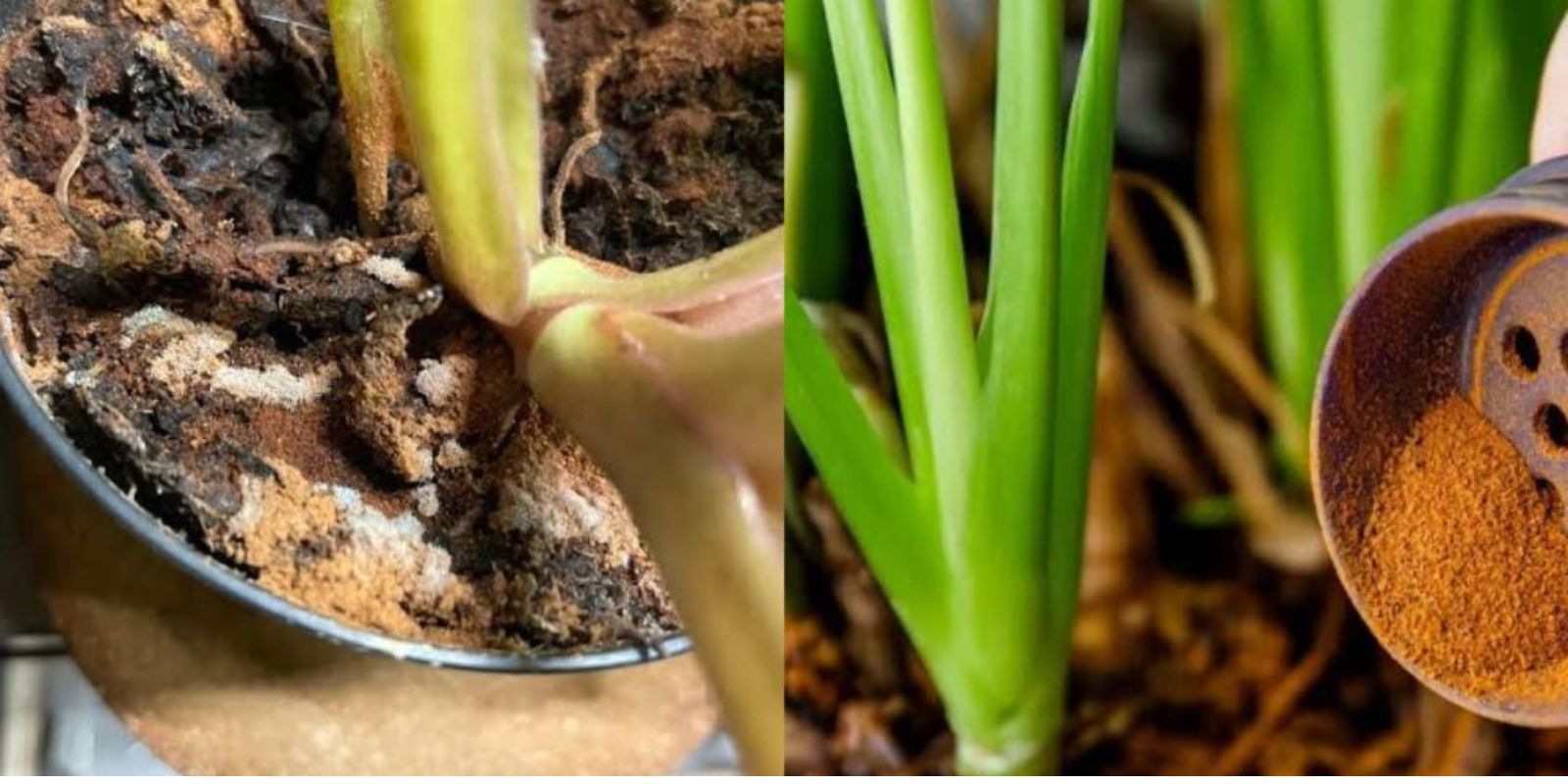In the world of gardening, we are always searching for natural, sustainable solutions to keep plants healthy and thriving. Enter cinnamon, a common kitchen spice that holds the potential to revolutionize your gardening routine. This aromatic spice isn’t just for your coffee or dessert—cinnamon is packed with properties that make it a powerful ally for plant care. From its antifungal capabilities to pest-repelling properties, cinnamon can work wonders for your indoor and outdoor plants.
If you’re curious about how to use this secret ingredient to ensure lush, vibrant greenery, this guide will walk you through everything you need to know about incorporating cinnamon into your plant care routine.
Why Cinnamon is a Game-Changer for Gardening
Cinnamon contains natural compounds like cinnamaldehyde and eugenol, which are antifungal, antibacterial, and pest-repelling agents. These properties make it effective for:
- Preventing fungal diseases like root rot and damping-off in seedlings.
- Protecting plants from harmful bacteria and infections.
- Acting as a natural insect repellent, particularly for ants and gnats.
- Accelerating the healing process of damaged plants.
- Boosting overall plant health with regular use.
Unlike chemical solutions, cinnamon is an eco-friendly and cost-effective option that aligns perfectly with sustainable gardening practices.
How to Use Cinnamon for Healthy Plants
Here are some simple yet effective ways to use cinnamon in your gardening routine:
1. Sprinkle Cinnamon on Soil
Cinnamon can work wonders when sprinkled directly on the soil of your plants.
- What it Does: Prevents fungal growth, enriches the soil with antifungal properties, and deters pests.
- How to Apply: Add a teaspoon of cinnamon to the surface of the soil for each plant.
2. Apply to Roots or Problem Areas
If your plant is suffering from root rot, fungus, or bacterial infections, cinnamon can help.
- What it Does: Protects the roots and plant base from infections and speeds up recovery.
- How to Apply: Sprinkle cinnamon on the roots before planting or directly on the affected areas.
3. Protect Seedlings from Fungi
Seedlings are particularly vulnerable to fungi like damping-off.
- What it Does: Acts as a natural fungicide to protect delicate seedlings.
- How to Apply: Dust cinnamon lightly over the soil in your seedling trays.
4. Repel Ants and Other Pests
Cinnamon’s strong scent is an excellent deterrent for ants, gnats, and other pests.
- What it Does: Keeps pests away without the need for harsh chemical repellents.
- How to Apply: Scatter cinnamon around the plant base or along ant trails.
5. Heal Damaged Leaves
For plants with damaged or wilting leaves, cinnamon can promote healing.
- What it Does: Prevents infections in wounds and encourages tissue repair.
- How to Apply: Dab cinnamon on the damaged areas of the leaves.
6. Reapply Every Two Weeks
Consistency is key when using cinnamon for plant care.
- What it Does: Maintains plant health and prevents recurring issues.
- How to Apply: Refresh the cinnamon application every 15 days.
Benefits of Using Cinnamon for Plants
- Enhanced Growth: The antifungal properties of cinnamon create a healthier growing environment for roots, promoting better nutrient uptake and robust growth.
- Vibrant Foliage: By eliminating harmful fungi and bacteria, cinnamon helps plants produce lush, green leaves full of chlorophyll.
- Increased Production: For flowering and fruiting plants, cinnamon stimulates healthier blooms and abundant harvests.
- Natural Pest Control: Deters pests without the need for chemical sprays, making it safe for pets, kids, and the environment.
- Eco-Friendly Gardening: Using cinnamon aligns with sustainable gardening practices, reducing reliance on synthetic chemicals.
Common Gardening Problems Solved by Cinnamon
- Root Rot: Caused by overwatering or poor drainage, root rot can be combated by applying cinnamon to the roots during planting.
- Damping-Off in Seedlings: This fungal disease can wipe out entire trays of seedlings, but a dusting of cinnamon acts as a preventive shield.
- Ant Infestations: Ants and their associated pests like aphids can be deterred effectively with cinnamon.
- Leaf Damage: Torn or damaged leaves are prone to infections, which cinnamon can prevent.
- Gnats in Houseplants: A sprinkle of cinnamon on the topsoil can keep gnats at bay, ensuring a pest-free environment indoors.
Is Cinnamon Safe for All Plants?
Yes, cinnamon is generally safe for most plants, including houseplants, vegetables, flowers, and herbs. However, it’s important to:
- Use it in moderation. Over-application can alter soil conditions.
- Test a small area first, especially for delicate plants.
Cinnamon in Sustainable Gardening
Recycling kitchen ingredients like cinnamon into your gardening routine not only benefits your plants but also supports sustainable practices. It reduces waste, minimizes the use of harmful chemicals, and helps create a balanced, eco-friendly gardening ecosystem.
A Cost-Effective Plant Care Solution
Cinnamon is a budget-friendly option compared to chemical fertilizers and pest control methods. With just a small amount, you can protect multiple plants, saving both money and time.
Final Thoughts: Cinnamon as a Gardening Ally
Sometimes, the simplest solutions are the most effective. Cinnamon is a powerhouse of benefits for your plants, providing antifungal protection, pest control, and growth stimulation. By incorporating this natural remedy into your gardening routine, you’ll not only save time and money but also ensure that your plants remain healthy and vibrant.
Try the cinnamon hack today and see the difference for yourself! 🌱
Interact and Share Your Experiences!
Have you used cinnamon in your garden before? Share your results or ask questions in the comments below! Let’s build a community of eco-conscious gardeners.

